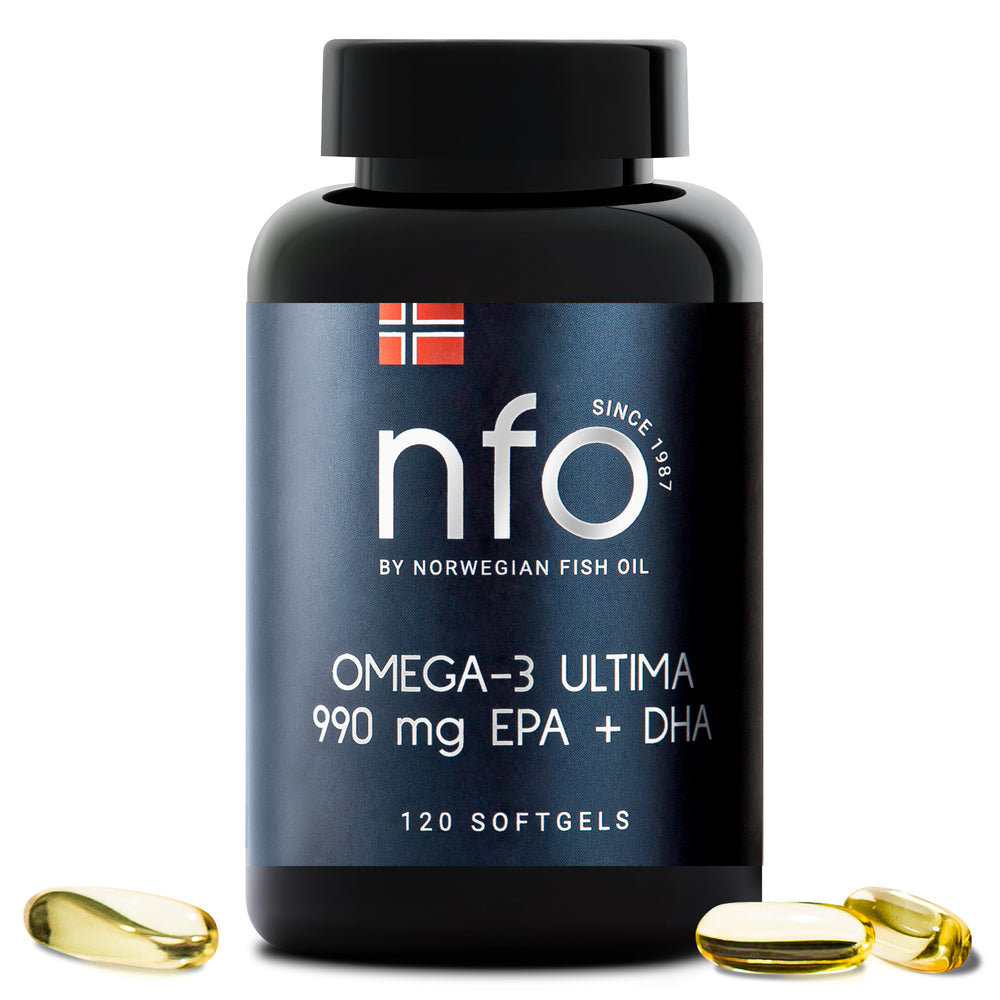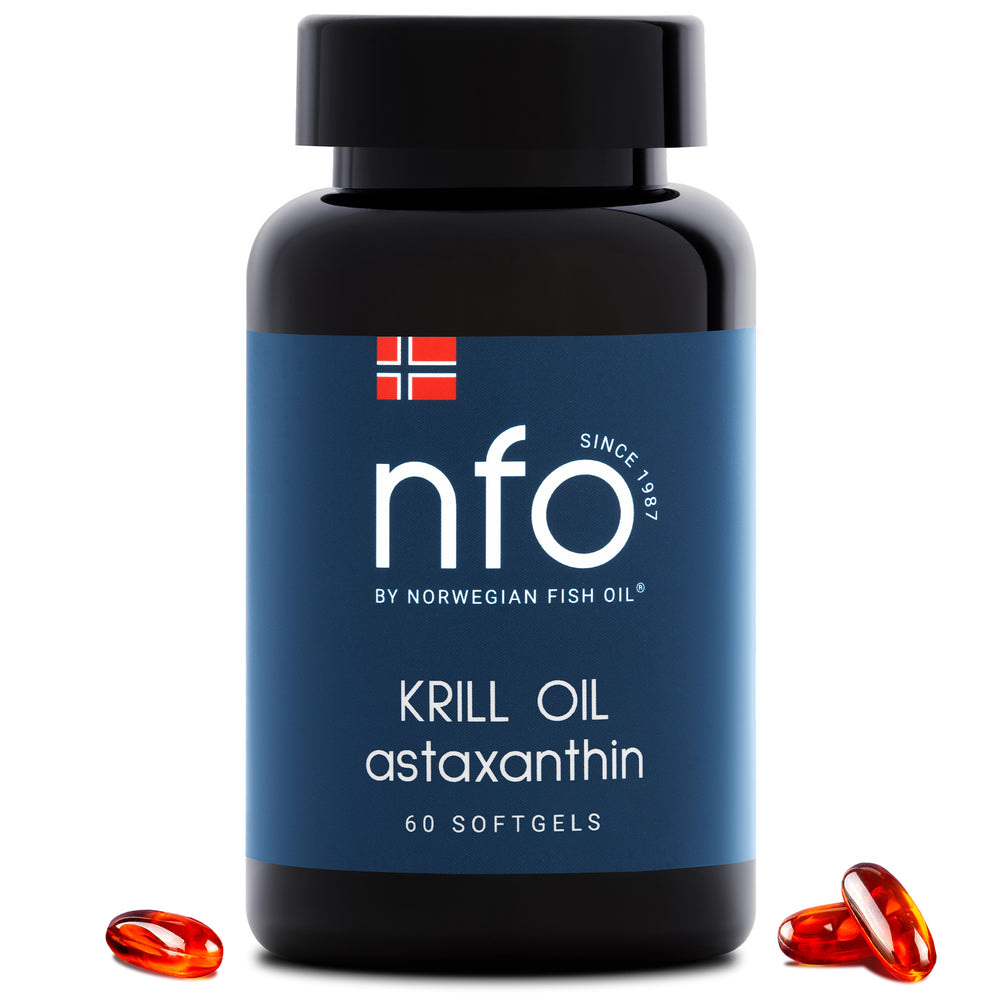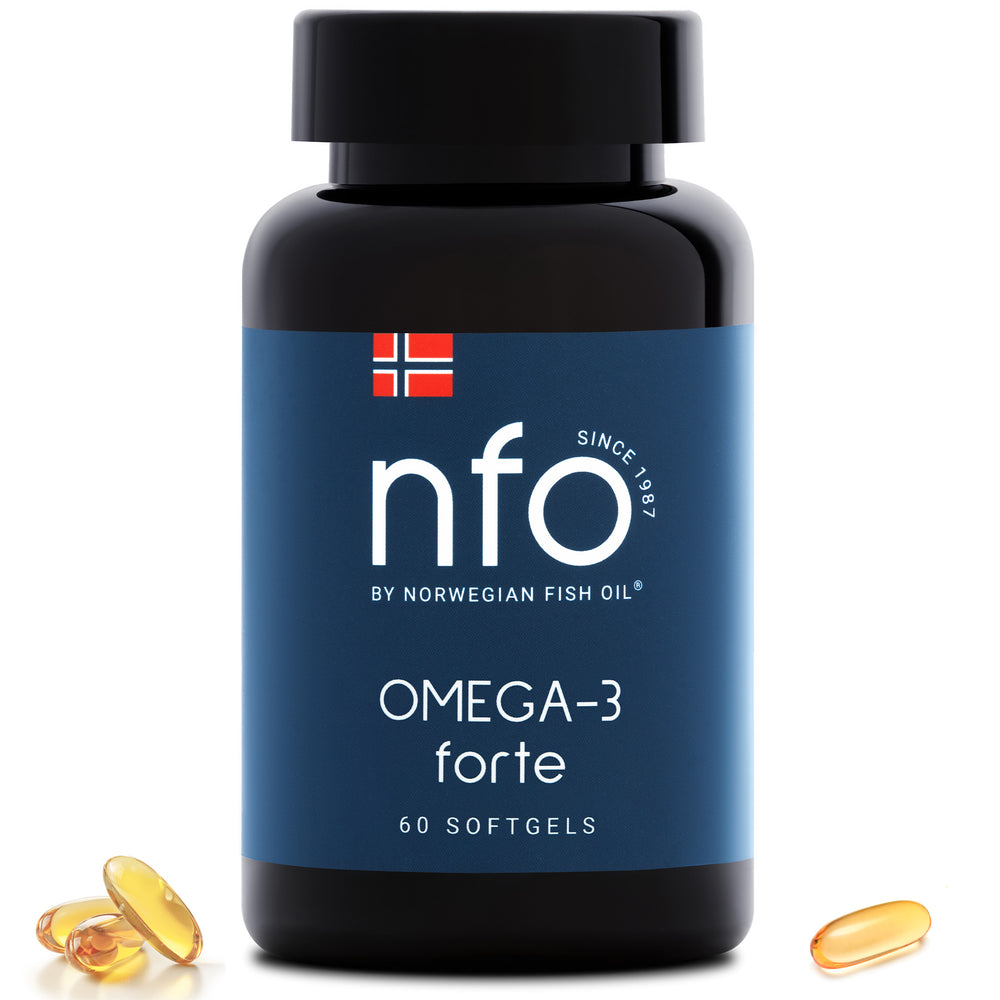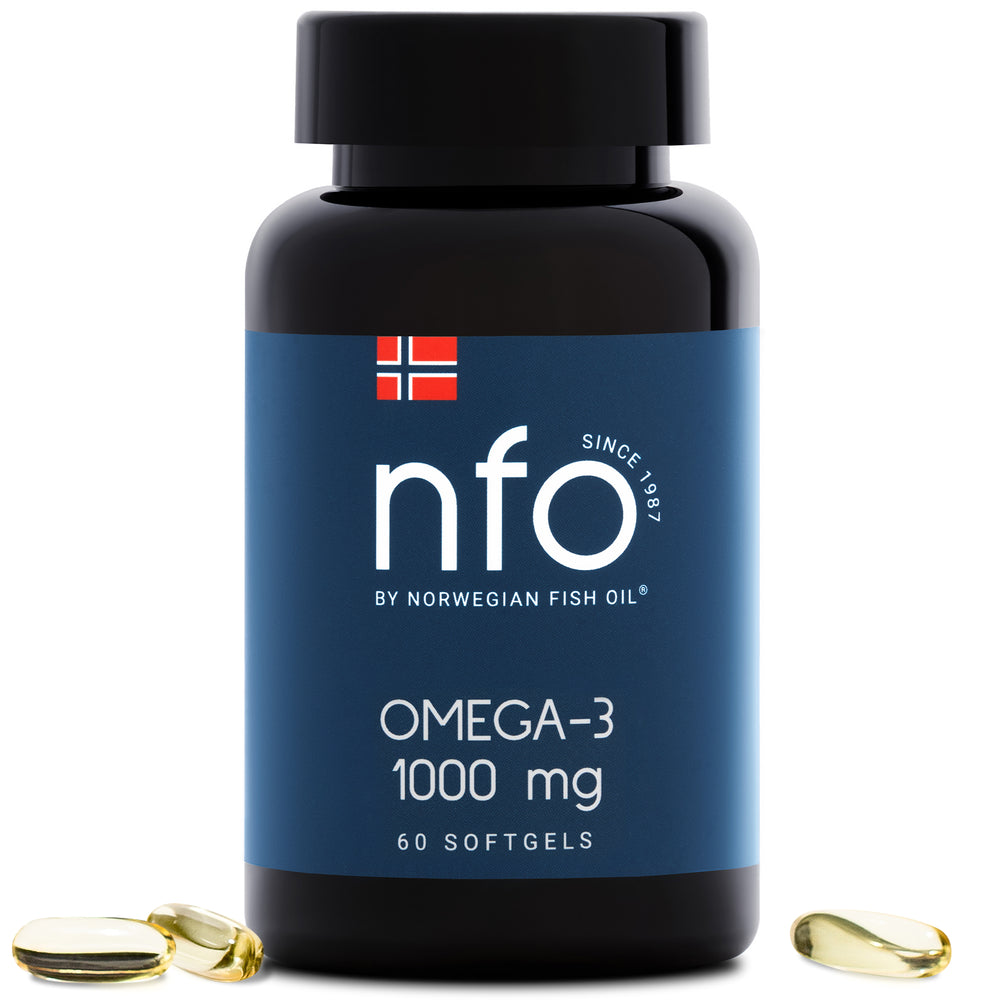
Omega-3-Fettsäuren sind essentielle Fette, das heißt, sie sind für die menschliche Gesundheit notwendig, können aber nicht vom Körper selbst hergestellt werden. Daher müssen sie über die Ernährung aufgenommen werden.
Diese mehrfach ungesättigten Fette sind bekannt für ihre Rolle bei der Erhaltung der Herzgesundheit, der Unterstützung der neurologischen Entwicklung und der Verringerung von Entzündungen.
Arten von Omega-3-Fettsäuren
Omega-3-Fettsäuren bestehen aus drei Haupttypen:
- Alpha-Linolensäure (ALA)
- Eicosapentaensäure (EPA)
- Docosahexaensäure (DHA)
ALA ist in Pflanzenölen wie Leinsamen-, Soja- und Rapsöl enthalten, während EPA und DHA hauptsächlich aus Fisch und Algen gewonnen werden. Die Umwandlung von ALA zu EPA und DHA im menschlichen Körper ist begrenzt, weshalb direkte Quellen von EPA und DHA effektiver sind, um die mit Omega-3 verbundenen Vorteile zu liefern.
Alpha-Linolensäure (ALA)
ALA ist bekannt für seine Rolle als Baustein für andere Omega-3-Fettsäuren, insbesondere EPA und DHA. Die Umwandlungsrate von ALA zu EPA und weiter zu DHA im menschlichen Körper ist jedoch recht gering, in der Regel weniger als 10 % für EPA und noch weniger für DHA. Trotz dieser ineffizienten Umwandlung hat ALA selbst wichtige ernährungsphysiologische Funktionen, einschließlich der Unterstützung der Herz-Kreislauf-Gesundheit.
Eicosapentaensäure (EPA)
EPA ist eine mehrfach ungesättigte Fettsäure (PUFA), die fünf Doppelbindungen in ihrer Kohlenstoffkette aufweist, was zu ihrer flüssigen Natur und biologischen Funktionen beiträgt. Sie kommt am häufigsten in kaltem fettem Fisch und Algen vor, die die Hauptnahrungsquellen dieses Nährstoffs sind. Wichtige Quellen sind:
- Lachs
- Makrele
- Sardinen
- Sardellen
- Hering
- Algenöl (eine pflanzliche Quelle, die für Vegetarier und Veganer geeignet ist)
Docosahexaensäure (DHA)
DHA enthält sechs Doppelbindungen in seiner Kohlenstoffkette, was es hochgradig ungesättigt macht. Diese strukturelle Eigenschaft ermöglicht Flüssigkeit und Flexibilität in Zellmembranen, was für die ordnungsgemäße Zellfunktion unerlässlich ist. DHA stammt hauptsächlich aus Meereslebewesen und ist reichlich vorhanden in:
- Fettreiche Fische wie Lachs, Makrele, Sardinen und Forelle.
- Algen, die eine bedeutende pflanzliche Quelle für DHA darstellen können und somit für Vegetarier und Veganer geeignet sind.
- Fischölpräparate, die oft verwendet werden, um die Aufnahme von DHA in der Ernährung zu erhöhen.
- Algenölpräparate, die eine pflanzliche Alternative bieten und reines DHA liefern.
Bedeutung der Omega-3-Fettsäuren
Alpha-Linolensäure (ALA)
Obwohl die Umwandlungsrate von ALA zu EPA und DHA relativ gering ist, besitzt ALA selbst einzigartige Vorteile und ist entscheidend für die Erhaltung der Herz-Kreislauf-Gesundheit, die Reduzierung von Entzündungen und möglicherweise die Unterstützung kognitiver Funktionen.
Gesundheitliche Vorteile von ALA
- Herz-Kreislauf-Gesundheit: Der Konsum von ALA wird mit einem reduzierten Risiko für Herz-Kreislauf-Erkrankungen in Verbindung gebracht. Studien legen nahe, dass es hilft, Cholesterinwerte zu senken und möglicherweise den Blutdruck zu reduzieren, wodurch das Risiko für Herzkrankheiten und Schlaganfälle verringert wird.
- Entzündungshemmende Wirkungen: ALA besitzt von Natur aus entzündungshemmende Eigenschaften. Regelmäßige Einnahme kann helfen, chronische Entzündungen zu mildern, die eine Ursache vieler chronischer Erkrankungen sind, einschließlich Typ-2-Diabetes, Fettleibigkeit und Arthritis.
- Neuroprotektive Eigenschaften: Obwohl ALA in dieser Hinsicht nicht so wirksam ist wie DHA, trägt es dennoch zur Erhaltung der Gehirngesundheit bei. Es kann kognitive Funktionen unterstützen und einem kognitiven Abbau vorbeugen.
Empfohlene Dosierung
Die optimale Aufnahme von ALA variiert je nach Alter, Geschlecht und allgemeiner Gesundheit. Obwohl es keine allgemein anerkannte Dosierung gibt, bieten verschiedene Gesundheitsorganisationen Richtlinien:
- Erwachsene: Das Institute of Medicine (IOM) empfiehlt eine angemessene Zufuhr (AI) von 1,1 Gramm pro Tag für erwachsene Frauen und 1,6 Gramm pro Tag für erwachsene Männer.
- Schwangere und stillende Frauen: Eine höhere Aufnahme wird oft empfohlen, um die Gehirnentwicklung von Fötus und Säuglingen zu unterstützen, üblicherweise etwa 1,4 Gramm pro Tag.
Zeitpunkt der Einnahme
Es gibt keinen spezifischen Zeitpunkt für die Einnahme von ALA, der als vorteilhafter erwiesen wäre. Der wichtigste Faktor ist die tägliche, gleichmäßige Aufnahme, um eine konstante Versorgung mit dieser essentiellen Fettsäure sicherzustellen. Sie kann im Rahmen einer ausgewogenen Ernährung über verschiedene Mahlzeiten am Tag aufgenommen werden.
Eicosapentaensäure (EPA)
EPA ist entscheidend für die Produktion von Eicosanoiden – Molekülen, die helfen, systemische Entzündungen zu reduzieren. Im Gegensatz zu Alpha-Linolensäure (ALA), die erst umgewandelt werden muss, um wirksam zu sein, wird EPA vom Körper direkt genutzt und bietet sofortige Vorteile. Es ist besonders wichtig für seine Rollen bei der Herzgesundheit, dem geistigen Wohlbefinden und der Immunfunktion.
Gesundheitliche Vorteile von EPA
- Herz-Kreislauf-Gesundheit: EPA ist bekannt für seine Fähigkeit, die Herzgesundheit zu verbessern. Es hilft, die Triglyzeridspiegel zu senken, den Blutdruck zu reduzieren und das Risiko von arterienverhärtenden Plaques zu verringern. Diese Effekte zusammen reduzieren das Risiko von Herzinfarkten und Schlaganfällen.
- Entzündungshemmende Wirkungen: Die starken entzündungshemmenden Eigenschaften von EPA sind vorteilhaft für die Behandlung von Erkrankungen wie rheumatoider Arthritis und zur Reduzierung allgemeiner Entzündungen, die zu chronischen Krankheiten führen können.
- Mentale Gesundheit: Zahlreiche Studien legen nahe, dass EPA positive Effekte auf die psychische Gesundheit hat, Symptome von Depressionen reduziert und möglicherweise Angst- und Stimmungserkrankungen beeinflusst.
- Unterstützung des Immunsystems: EPA kann die Immunantwort modulieren und dadurch möglicherweise das Auftreten von immunvermittelten Erkrankungen und Allergien reduzieren.
Empfohlene Dosierung
Die Dosierung von EPA kann je nach individuellen Gesundheitszielen und bestehenden medizinischen Bedingungen variieren. Allgemeine Empfehlungen umfassen:
- Allgemeine Gesundheit: Zur Erhaltung der allgemeinen Gesundheit wird üblicherweise eine tägliche Aufnahme von etwa 250 bis 500 mg kombiniertem EPA und DHA empfohlen.
- Hohe Triglyzeride: Für Personen mit hohen Triglyzeridwerten werden höhere Dosen, typischerweise etwa 2 bis 4 Gramm EPA (oft in Kombination mit DHA), unter ärztlicher Aufsicht empfohlen.
- Mentale Gesundheit: Studien haben unterschiedliche Dosierungen für mentale Gesundheitsvorteile verwendet, oft etwa 1 Gramm EPA pro Tag.
Zeitpunkt der Einnahme
Der Zeitpunkt der EPA-Einnahme beeinflusst in der Regel nicht deren Wirksamkeit, daher kann es zu jeder Tageszeit eingenommen werden. Es wird jedoch meist empfohlen, EPA mit Mahlzeiten einzunehmen, um die Aufnahme zu verbessern und mögliche Magen-Darm-Beschwerden zu reduzieren.
Docosahexaensäure (DHA)
DHA ist entscheidend für die richtige Gehirnentwicklung und -funktion. Es macht einen bedeutenden Teil des Gehirn- und Netzhautgewebes aus und ist somit für kognitive und visuelle Prozesse unverzichtbar. Die Fähigkeit des Körpers, DHA aus anderen Omega-3-Fettsäuren wie ALA zu synthetisieren, ist begrenzt, was die Notwendigkeit einer direkten Aufnahme über DHA-reiche Lebensmittel oder Nahrungsergänzungsmittel unterstreicht.
Gesundheitliche Vorteile von DHA
- Neurologische Entwicklung: DHA ist essentiell für das Wachstum und die funktionelle Entwicklung des Gehirns bei Säuglingen. Ausreichende DHA-Spiegel stehen im Zusammenhang mit verbesserten Lernfähigkeiten sowie der Entwicklung kognitiver und motorischer Fähigkeiten.
- Kognitive Gesundheit: Bei Erwachsenen unterstützt DHA die Gehirn- und neurologische Funktion und kann das Risiko eines kognitiven Abbaus verringern. Es wird mit einem geringeren Risiko für Alzheimer und andere demenzbedingte Erkrankungen in Verbindung gebracht.
- Sehgesundheit: Als wichtiger struktureller Bestandteil der Netzhaut ist DHA entscheidend für die Erhaltung des normalen Sehvermögens und der allgemeinen Augengesundheit.
- Herzgesundheit: Ähnlich wie andere Omega-3-Fettsäuren hilft DHA, Triglyzeride zu senken, Entzündungen zu reduzieren und kann den Blutdruck moderat beeinflussen, wodurch es zur Herz-Kreislauf-Gesundheit beiträgt.
- Entzündungshemmende Wirkungen: DHA produziert Resolvine und Protektine, die starke entzündungshemmende Eigenschaften besitzen und bei der Behandlung chronischer Entzündungskrankheiten helfen können.
Empfohlene Dosierung
Die optimale Dosierung von DHA kann je nach Alter, Gesundheitszustand und spezifischen Gesundheitszielen variieren:
- Säuglinge: Muttermilch enthält natürlich DHA, aber Säuglinge, die mit Formel ernährt werden, könnten von DHA-angereicherten Formeln profitieren.
- Kinder und Jugendliche: Es gibt keine festgelegte empfohlene Tagesdosis (RDA) für Kinder, aber eine ausgewogene Ernährung mit DHA-Quellen trägt zur normalen Gehirn- und Augenentwicklung bei.
- Erwachsene: Für die allgemeine Gesundheit wird typischerweise eine tägliche Aufnahme von 200-500 mg kombiniertem EPA und DHA empfohlen.
- Schwangere und stillende Frauen: Eine Aufnahme von mindestens 200-300 mg DHA täglich wird oft empfohlen, um die Gehirn- und Augenentwicklung des Fötus zu unterstützen.
Zeitpunkt der Einnahme
DHA kann zu jeder Tageszeit eingenommen werden; es wird jedoch allgemein empfohlen, es mit Mahlzeiten zu konsumieren, um die Aufnahme zu verbessern und mögliche Verdauungsbeschwerden zu minimieren.
Ausgewogene Aufnahme von DHA und EPA: Strategien für verschiedene Gesundheitsziele
Balance für die Herzgesundheit
Für die Herz-Kreislauf-Gesundheit ist EPA etwas einflussreicher, insbesondere bei der Senkung von Triglyzeriden und der Reduzierung von Entzündungen, Risikofaktoren für Herzkrankheiten. Ein höheres Verhältnis von EPA zu DHA kann vorteilhaft sein, um kardiovaskuläre Ereignisse zu reduzieren.
- Empfohlenes Verhältnis: Bevorzugt ein höheres EPA im Verhältnis zu DHA, wie ein Verhältnis von 2:1.
- Quellen: Achten Sie auf Fischölpräparate mit einem höheren EPA-Gehalt und fetthaltigen Fischen wie Makrele und Albacore-Thunfisch. Weitere Informationen finden Sie unter American Heart Association.
- Kern-Supplements: Omega-3 Forte.
Ausgewogenheit für kognitive Funktion und psychische Gesundheit
DHA spielt eine entscheidende Rolle für die Gehirngesundheit und beeinflusst die kognitive Funktion sowie die psychische Gesundheit. Es erhält die neuronale Struktur und Funktion, während EPA die Stimmungsregulation durch seine entzündungshemmenden Wirkungen unterstützt.
- Empfohlenes Verhältnis: Höherer DHA-Anteil im Verhältnis zu EPA, besonders wichtig für pränatale, Säuglings- und Senioren-Ernährung, mit dem Ziel eines Verhältnisses von mindestens 1:1.
- Quellen: Algenöl (reich an DHA), Nahrungsergänzungsmittel und fetter Fisch wie Lachs, die ein gutes Gleichgewicht beider Omega-3-Fettsäuren bieten. Weitere Details sind verfügbar unter National Institutes of Health.
- Kern-Supplements: Omega-3 Stark DHA.
Ausgewogenheit bei entzündlichen Erkrankungen und Immungesundheit
EPA moduliert effektiv die entzündlichen Reaktionen des Körpers, was es nützlich macht für die Behandlung von Erkrankungen wie rheumatoider Arthritis und anderen entzündlichen Störungen. Eine erhöhte EPA-Aufnahme kann helfen, diese Erkrankungen besser zu kontrollieren.
- Empfohlenes Verhältnis: Höherer EPA-Anteil, bis zu einem Verhältnis von 3:1 zu DHA.
- Quellen: EPA-reiche Fischölpräparate, fetter Fisch wie Sardinen und Anchovis. Weitere Informationen finden Sie unter Arthritis Foundation.
- Kern-Supplements: Omega-3 1000, Omega-3 Ultima.
Ausgewogenheit für Schwangerschaft und Säuglingsentwicklung
Während der Schwangerschaft und der frühen Kindheitsentwicklung ist DHA für die Gehirn- und Augenentwicklung von entscheidender Bedeutung. Schwangeren und stillenden Frauen wird oft geraten, auf die DHA-Aufnahme zu achten.
Ungefähr 50-60 % des Gehirngewichts bestehen aus Lipiden, von denen 35 % aus Omega-3-PUFA bestehen. DHA macht mehr als 40 % der gesamten Omega-3-PUFA im neuronalen Gewebe aus, besonders in der grauen Substanz [LINK]...
- Empfohlenes Verhältnis: Höherer DHA-Anteil, mit Fokus auf die Erreichung ausreichender DHA-Spiegel.
- Quellen: DHA-spezifische Nahrungsergänzungsmittel, pränatale Vitamine mit DHA und DHA-reiche Lebensmittel wie Lachs und Algenöl. Hinweise dazu finden Sie unter Mayo Clinic.
- Kern-Supplements: Omega-3 Stark DHA.
Allgemeine Gesundheit und Wohlbefinden
Für den durchschnittlichen Erwachsenen ohne spezifische Gesundheitsprobleme ist eine ausgewogene Aufnahme von EPA und DHA vorteilhaft. Dies unterstützt die allgemeine Gesundheit und bietet Vorteile in einem breiten Spektrum von der Gehirnfunktion bis zur Herzgesundheit.
- Empfohlenes Verhältnis: Gleiche Mengen EPA und DHA, typischerweise in Standard-Fischöl-Supplements enthalten.
- Quellen: Ausgewogene Supplements und eine Ernährung, die regelmäßig verschiedene fetthaltige Fische einschließt.
- Kern-Supplements: Omega-3 1000 (allgemein), Omega-3 Ultima (Sport und Fitness), Omega-3 KIDS (Kinder).
Fazit
Das optimale Gleichgewicht von DHA und EPA hängt wesentlich von den individuellen Gesundheitszielen und Lebensphasen ab. Das Verständnis der spezifischen Rollen und Vorteile jeder Omega-3-Fettsäure kann helfen, Ernährungsentscheidungen und die Verwendung von Nahrungsergänzungsmitteln gezielt auf persönliche Gesundheitsbedürfnisse abzustimmen. Es wird empfohlen, vor größeren Änderungen der Supplement-Routinen mit Gesundheitsdienstleistern Rücksprache zu halten, insbesondere bei Personen mit bestehenden Gesundheitsproblemen oder Medikamenteneinnahme. Durch eine strategische Balance der DHA- und EPA-Aufnahme können Einzelpersonen die therapeutischen Vorteile dieser essentiellen Nährstoffe maximieren.
Quellen
- National Institutes of Health (NIH) - Office of Dietary Supplements, https://ods.od.nih.gov/factsheets/Omega3FattyAcids-Consumer/
- American Heart Association (AHA), https://www.heart.org
- Mayo Clinic, https://www.mayoclinic.org
- Arthritis Foundation, https://www.arthritis.org
Über den Autor

Dmitry Afanasyev, Gesundheits- und Fitnessprofi bei Grand Fitness Stockholm, Nordic Wellness Lidingo, Nordic Wellness Larsberg
Stockholm, SCHWEDEN
Bryan College (Gesundheits- und Fitnesstrainer), ACE-zertifizierter PT
Folgen Sie Dmitry auf Instagram →




